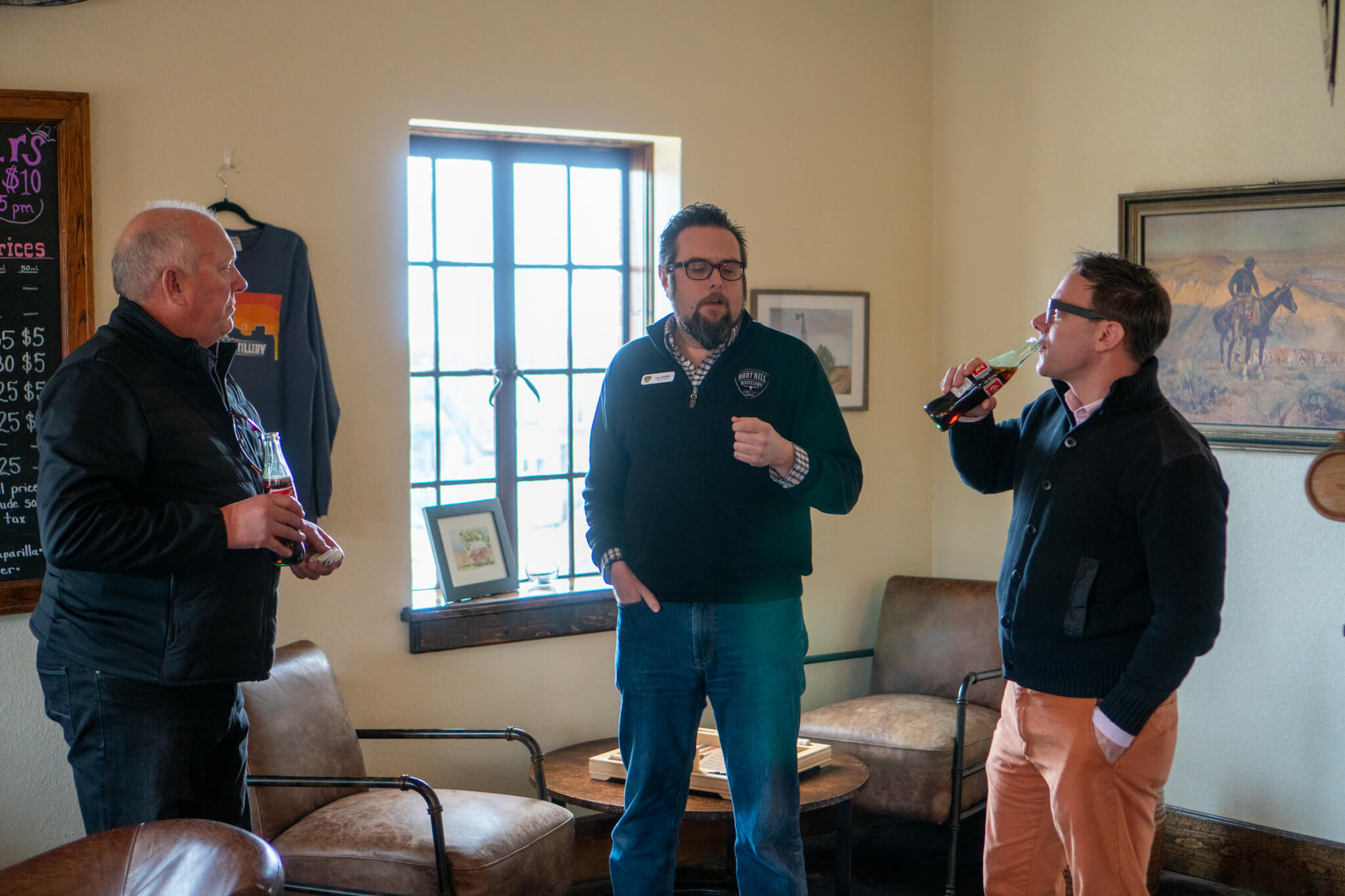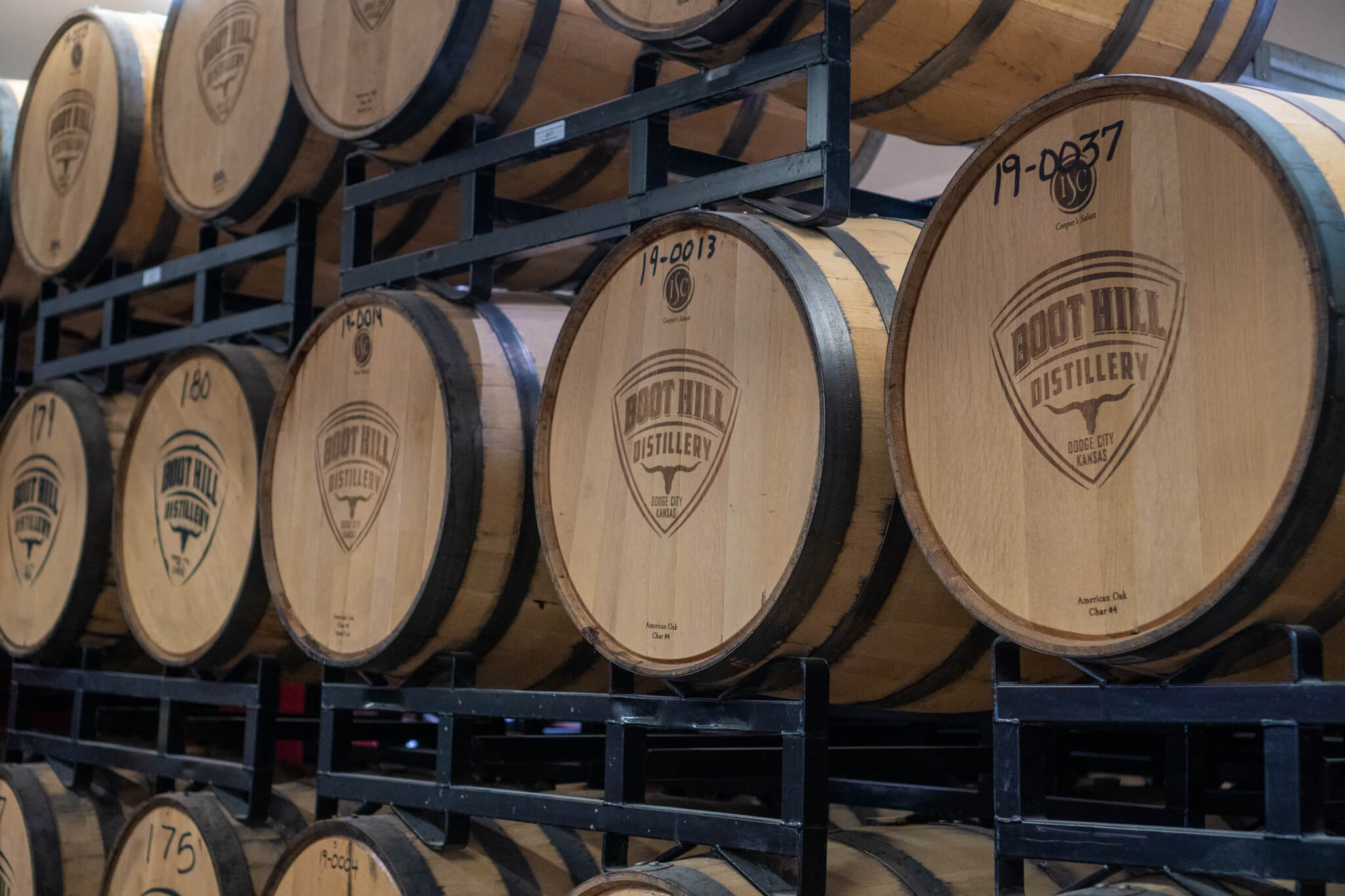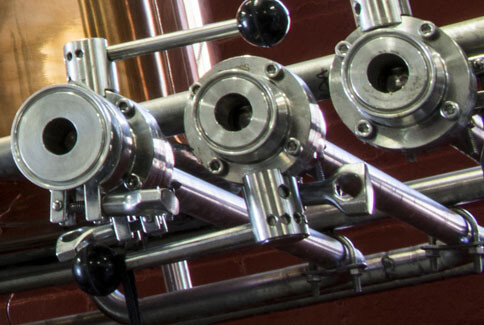by Lee Griffith, Director of Sales
I have been in the business of making and selling whiskey for a short amount of time. But through giving tours and talking with countless folks over samples of our spirits, one element soon became clear and an opportunity unique to us suddenly presented itself.
“Where does the color come from?” someone would ask and I would almost skip a beat, blink, and stare for what seemed like an uncomfortable amount of time while I processed this. They didn’t know?
They’re at a distillery, shouldn’t they know this? I would think. But as I interacted with more and more people, I realized that this was not common knowledge. (You mean there are other things to know about rather than whiskey? Preposterous!)

Two Distilleries Diverged in a Wood
There are a few ways young distilleries such as ours can sell whiskey: one, they source their grain, mill it, cook into a mash, ferment for several days, then access the alcohol through boiling it out. After a few times of refinement and about 7-10 days, the distillery will have converted whole grain into beverage ethanol. Or, two, they contact a contract distiller like MGP Ingredients, get a catalogue of already aged whiskies set to their specifications, buy several totes, have it delivered to the distillery and fill it into bottles with their label on it. It is perfectly legal to do so and the whisky turns out pretty good and consistent.
Obviously path one is way more labor intensive and time consuming. Sure, the distillery has succeeded in making ethanol, but that’s basically all it is. In other parlances it’s referred to as “Moonshine” or unaged, raw spirit. The modern, well-informed consumer at least is aware that this is not the most drinkable form of whiskey and conjures up images of bearded, bib-overalled, simpletons making such a concoction through dubious means deep in the underbrush.
And yes, this Moonshine (or “New Make Whiskey,” as a modern term, as we do pay all the taxes on it) can be sold, but that's not where the market is. Deep, amber colored, long aged, well-storied whiskies are what fill liquor store shelves, are meticulously sipped, fussed over, and coveted. This is what sells. Yet, time cannot be cheated, the aging process doesn’t care if light bills, and mortgages, and salaries need paid.
This process really can’t be accelerated and those who have tried still can’t replicate the same quality as the march of time.
This is what we as distillers are up against: making a spirit, but not seeing a return for years. So what is a distillery to do?
Unapologetic Youth: White Whiskey
In Boot Hill Distillery’s case, we simply started from the beginning. We produced the best quality new-make whiskey possible using grain we grow on our own farms. This uniquely gives us complete control over the entire process. New Make was then filled into brand new, charred, American white oak barrels, and the clock started. It wasn’t long, however, before we had to taste. One week to be exact.
Whiskey thieved from the barrel surprisingly had developed a beautiful straw color. Initial nosing betrayed the raw graininess of youth, but underneath it all was the genesis of bourbon whiskey. It wasn’t half bad. The palate initially detected ethanol heat, but from this black pepper, sweet corn emerged. Wincing, we expected the familiar 1-2 moonshine punch from the finish, but the right hook never came. As the spirit washed over the back of the palate, a certain softness played over the tongue instead. All of the sudden, successive waves of flavor emerged: vanillas, fresh cut oak, and even dry cocoa powder finally wrapped up by a soft blanket of wheat. We were onto something, something good, and it only was a week old.
Soon a label was created and approved and within a few months we were bottling White Whiskey.
Coming of Age: Red Eye Whiskey
In the meantime, the clock was ticking on other barrels. Within a month, we tasted those as well. Within three months, we decided to release the second aged iteration, Red Eye Whiskey. So named as a “Frontier Style” or “Trail aged” whiskey, two months was about the amount of time it took a wagon in the late 1800s to travel from Kansas City to Santa Fe New Mexico along the Santa Fe trail. Back then, long-aged whiskies simply were not available and what was being delivered and sold as “Red Eye” whiskey was often of lesser quality and aged through dubious means.
This wouldn’t prove to be the case with Boot Hill’s Red Eye. The barrel began to shave off the rougher, grainy edges of the spirit and draw out the caramel, butterscotch, and oak flavors of the barrel. Stored in 5, 10, and 53-gallon barrels, the smaller size increased surface area that came into contact with the spirit. The longer it set, the better it was getting. Red Eye whiskey was soon released to the public and Boot Hill Distillery began to challenge the myth that longer equaled better. We still can’t cheat time, but we proved that a pleasantly drinkable, shorter-aged whiskey was possible. Our fans seemed to agree as Red Eye sales in the state began to take off.
Maturation into Adulthood: Bourbon
There is no substitution for patience, however, and time can’t move any faster. After waiting two years and taking random barrel samplings, we determined our first Bourbon Whiskey was ready to bottle. New make whiskey that was distilled and filled into new American white oak barrels back in late 2016 and early 2017 had transformed from clear, raw, and grain-forward to a beautifully mellow, rich bourbon whiskey with a dark, stained glass amber color. Filled into the barrel at the required 125 proof, we lost about 20 percent in two years to evaporation and gained several proof points to come out at a combined 128 proof. The flavor married to the spirit far exceeded our expectations in what is traditionally thought of as a short span of time.
A nose of green apple, leather, orange peel, vanilla, coffee, butterscotch and peach pie was mirrored in the taste with the addition of white pepper, cedar and stone-fruit. This completed a triad of whiskies that are bonded by composition, exceeding each other in character, flavor, and strength through the aging process.
Beginning with a refined new make in a barrel at one week, to several months, and finally several years, this gives a unique perspective of the aging process in real time within the same distillery.

Looking Ahead
Where do we go from here? I get this question frequently. Yes, we want to age our bourbons longer. Quite frankly, it is only getting better with age. This, however, is where the pleasure and patience of creating a world-class bourbon clash with the realities of running a business. We are delicately balancing holding some barrels back and draining others when the time is right for the best quality in the most efficient span of time. This is not easy. We are not taking the easy road.
Sure, we could source totes of already distilled and aged whiskey, bottle it and put our label on it. This is perfectly acceptable, We are doing the opposite, however. This is bourbon whiskey in the truest sense and takes distilling to its roots. It hearkens back to a time when farmers distilled their surplus grain to keep it from spoiling, or by chance to get an even better market price by turning it into a potent potable spirit.
Using our own fields, our own grain, that we have cultivated for centuries, we are building whiskey from the ground up. This creates a spirit that is uniquely ours, unique to Kansas. It showcases American agriculture and the persistence of the American entrepreneur. Farmers feed the world, and we definitely raise a glass to that. Now, we can raise a glass with it.


